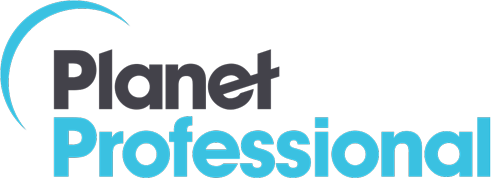Best Practices for Hiring in this Uncertain Time
In early 2020, the economy was booming, the job market was tight and employers were competing for the best talent. What has changed? A lot…and also, not that much. Hiring is still happening, although much of it looks very different right now. Here are some best practices for hiring during this uncertain time.
Keep the Pipeline Full
As COVID-19 rolled across the country, many organizations came to a full stop. Hiring managers and HR professionals focused on maintaining employee safety and facilitating remote work. But as the dust settles and people acclimate to the “new normal,” managers will be able to catch their breath and look beyond short-term needs.
It’s tempting to hunker down. But if you had a staffing need two months ago, you may very well still have that need. Rather than come to a complete stop (even if there is a hiring freeze in your company), it’s essential to keep recruiting. At some point in the future, the economy will adjust, and you’ll need good people to hire. Be ready when things shift. You don’t want to have to start at square one to fill an essential position.
If hiring isn’t frozen, consider whether you can hire remotely. Many companies are onboarding new employees remotely with the caveat that when things return to normal, these positions will be in an office. If you’ve got a good candidate in the final stages, seriously consider this. You don’t want to lose a good hire to another organization who is offering this option.
The reality is that high-quality candidates might be available that weren’t earlier in the year because they were employed. Right now, there is a tremendous opportunity to scoop up some of the best talent out there.
Be Honest and Communicate
Maybe you had the perfect person for the job and were about to make an offer when COVID-19 came crashing in. What now? Be honest and transparent. Almost every organization is experiencing layoffs, hiring freezes or company-wide salary reductions. Candidates will understand. Let them know your situation and how much you still want to hire them. Keep in close communication and give regular updates. And though it might seem like more work to keep a candidate engaged in these uncertain times, it will be far less than if you have to start over again from scratch.
What a candidate won’t be understanding of is being ghosted. Don’t wait until you get the all clear to hire. Stay in touch. Months of no proactive communication or not responding to the applicant’s emails or calls will send a bad message. Any person in their right mind is going to think, “This is not somebody I want to work for. That’s not what I’m looking for in a manager or company.”
But, with all the courting and communicating, don’t over-promise or give false hope. If you’re unsure you’ll be able to bring them onboard at some point, be truthful and tell them that. They may decide the opportunity is worth waiting for, but should know the full story in order to make a decision that is right for them. Either way, they will appreciate your honesty.
Still be the Employer of Choice
In a highly competitive job market, organizations strive to be an employer of choice, one that quality people will want to work for. In that respect, nothing has changed. Your hiring process says a lot about your culture and what it will feel like to work with you. In this new job market, you still have the opportunity to stand out. In fact, it’s even more important now to send that positive message. When you are able to hire, that excellent candidate will want to work for you.
Too often hiring managers see the interview process as separate from managing somebody. After all, the candidate isn’t even an employee yet. But in reality, how you interact and communicate with job seekers tells them a lot about who you are as a manager.
Improve Processes
This may also be a great opportunity to investigate or create new processes and systems. Set yourself up so that coming out of this, you’re running better. Are there improvements you’ve been wanting to tackle but haven’t had the time or resources to do? Take a look at your current practices. How can you make them better? Could you automate these processes? And how can you make sure that, should we ever have a situation like this again, your infrastructure is set up to handle it?
For instance, if you haven’t used remote interviewing tools, now’s the time to start. Create systems for doing screening and interviewing virtually. Train your managers and talent team on how to effectively use these methods. Develop ways to qualify candidates using virtual tests that mirror the skills required for the position. For example, create – or purchase – an online accounting test or Excel exercise using actual data, so you can see in real time how the candidate will handle the work that they would be doing within the role.
It’s not creating a fix just for the interim, either. These are tools that you can use in the hiring process going forward, even when you are able to do in-person interviews.
If you don’t have the time or skills to handle this yourself, consider hiring contractors. There are a lot of strong project staff right now who are idle or unemployed. This could also be a way to try out a potential employee and determine if they would be a good fit for a permanent position.
Stay the Course
It feels like our world has been turned upside down, and yet, the basics still apply. Still strive to be the employer of choice by how you treat job seekers during this difficult time. If you have candidates who were on the cusp of hiring, keep them in the loop and communicate regularly. Keep your pipeline going. And, if you can, use this time to improve your hiring processes so that you come out on the other side more efficient and able to hit the ground running.
Photo credit: JESHOOTS.com from Pexels



